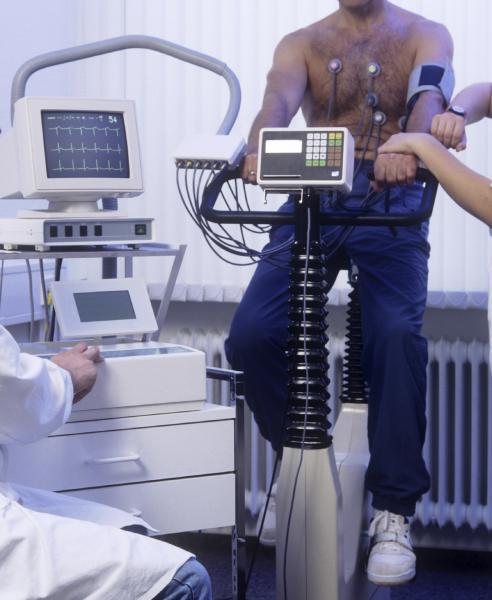Choosing the right stress test equipment is crucial for accurate diagnosis and effective management of cardiovascular conditions. Here’s an in-depth overview of some of the top stress test equipment options available, tailored to meet the diverse needs of healthcare providers:
1. Treadmill Stress Test Systems
Treadmill stress test systems are fundamental tools in cardiovascular assessment, allowing clinicians to evaluate cardiac function under controlled physical exertion. Key features include adjustable speed and incline settings, ECG monitoring capabilities, and user-friendly software for protocol customization and data analysis. Modern systems often integrate with stress echocardiography and nuclear imaging for comprehensive diagnostic capabilities. Considerations when choosing treadmill systems include reliability, ease of use, and compatibility with existing hospital infrastructure.
2. Stress Echocardiography Machines
Best Stress Test Equipment echocardiography machines utilize ultrasound imaging to assess cardiac structure and function during exercise or pharmacological stress. These machines provide real-time visualization of myocardial ischemia, valvular function, and overall cardiac performance. Advanced features include 2D/3D imaging, speckle tracking for myocardial strain analysis, and stress-specific imaging protocols. When selecting a stress echocardiography machine, factors such as image quality, software capabilities for quantitative analysis, and ergonomic design are critical.
3. Nuclear Stress Test Systems
Nuclear stress test systems involve injecting a radioactive tracer to evaluate myocardial perfusion and detect coronary artery disease. Specialized cameras capture images of radioactive uptake in the heart at rest and during stress, providing detailed insights into blood flow patterns and myocardial viability. Modern systems offer enhanced resolution, faster imaging times, and software tools for quantitative analysis. Considerations include radiation exposure levels, image quality, and integration with electronic medical records.
4. Cardiopulmonary Exercise Testing (CPET) Systems
CPET systems measure cardiopulmonary responses to exercise, assessing parameters such as oxygen consumption, heart rate variability, and ventilatory efficiency. These systems are valuable in evaluating exercise tolerance, determining fitness levels, and guiding rehabilitation programs for cardiac and pulmonary patients. Portable CPET devices with wireless connectivity facilitate testing in diverse settings, enhancing patient convenience and clinical flexibility. Key considerations include accuracy of physiological measurements, ease of setup, and compatibility with telemedicine platforms.
Choosing the Best Equipment
When evaluating stress test equipment options, healthcare providers should prioritize:
- Diagnostic Accuracy: Ensure the equipment provides reliable results essential for clinical decision-making.
- Patient Comfort and Safety: Opt for systems that prioritize patient comfort during stress testing procedures and adhere to safety guidelines.
- Integration and Compatibility: Choose equipment that seamlessly integrates with existing hospital information systems and workflow processes.
- Training and Support: Access to comprehensive training programs and ongoing technical support is essential for effective utilization of stress test equipment.
Conclusion
Selecting the best stress test equipment involves assessing technological capabilities, clinical utility, and practical considerations to meet the specific needs of healthcare settings. Whether opting for treadmill stress test systems, stress echocardiography machines, nuclear stress test systems, or CPET systems, healthcare providers can enhance diagnostic precision and optimize patient care outcomes. By investing in advanced stress test equipment aligned with clinical objectives and patient care priorities, medical professionals can achieve superior cardiovascular assessment and improve overall cardiac health management.



